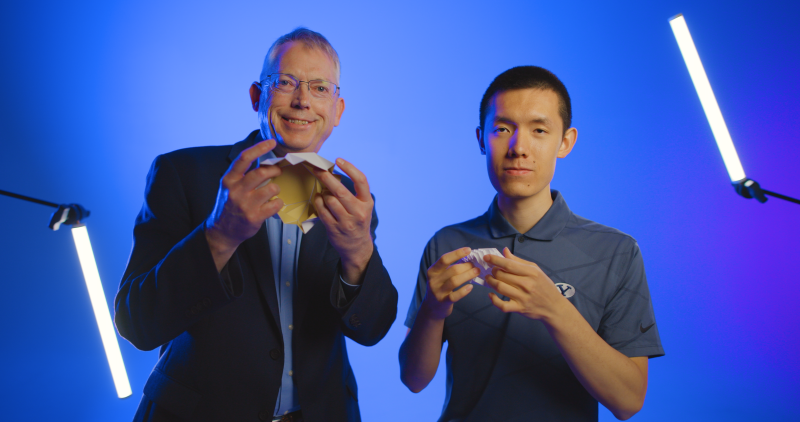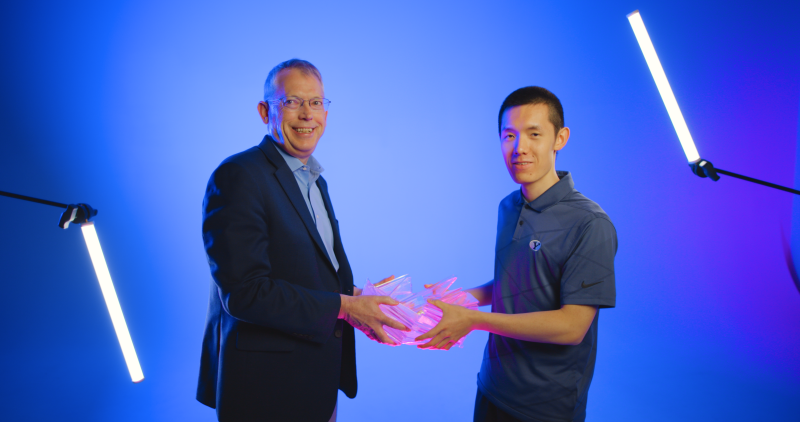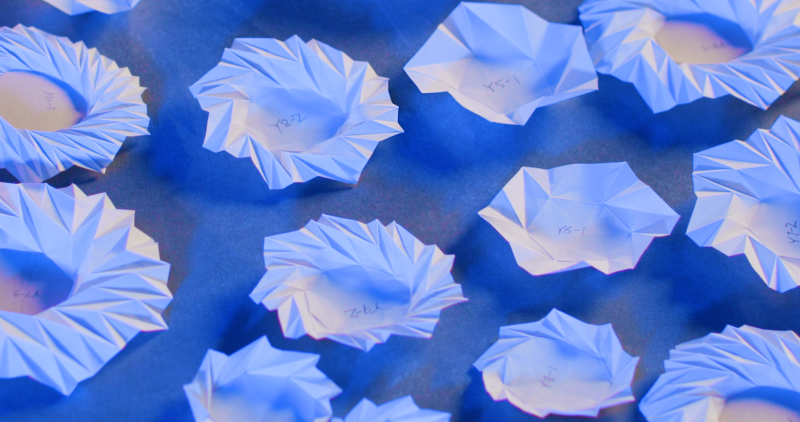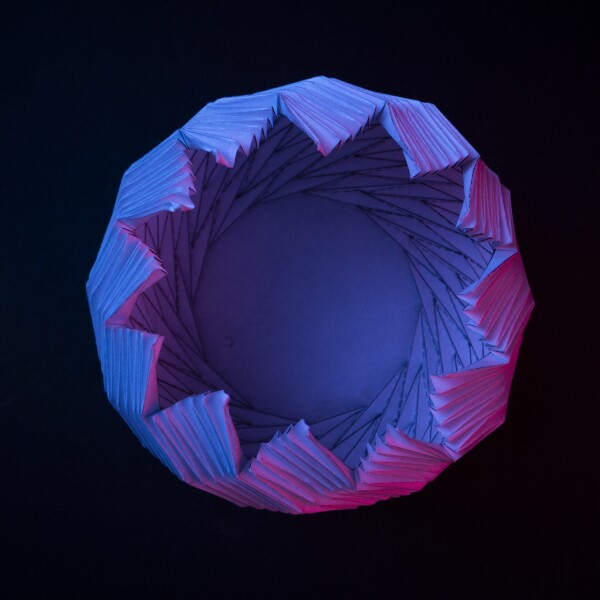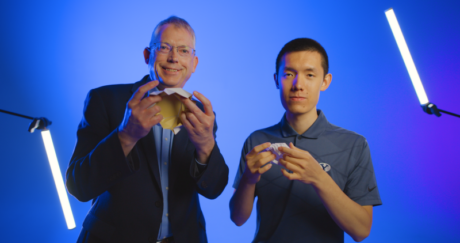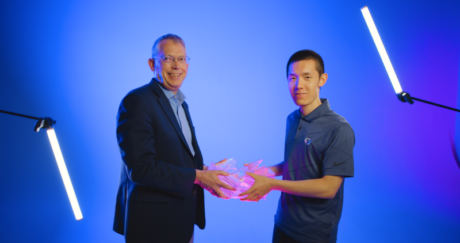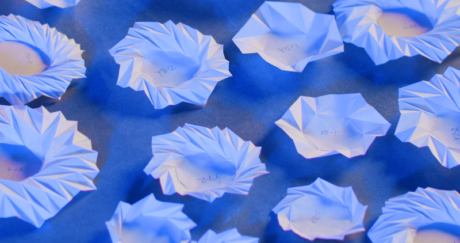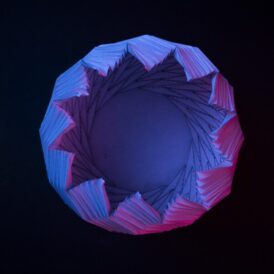BYU student discovers new origami pattern with real-world applications
- Brigham Young University student Kelvin Wang, right, and professor Larry Howell are pictured with Wang’s bloom-patterned origami.
- Brigham Young University student Kelvin Wang, right, and professor Larry Howell are pictured with Wang’s bloom-patterned origami.
- Bloom-patterned origami created by Brigham Young University student Kelvin Wang are pictured.
- A bloom-patterned origami created by Brigham Young University student Kelvin Wang is pictured.
One could ascertain that most origami patterns have been discovered because it has been an art form for many hundreds of years.
So consider the intrigue of Brigham Young University engineering professor Larry Howell when one of his students, Kelvin (Zhongyuan) Wang, created a bloom-patterned origami form he’d never seen before.
“I thought, ‘This looks new to me. I’ve never seen anything like it,'” said Howell. “But that doesn’t mean that there’s not something out there.”
Howell reached out to origami expert Robert Lang, who confirmed he’d never seen anything like it, either. Following a literature review, the bloom pattern was categorized as a new type of origami.
“This is the first time that this entire set has been recognized and categorized,” said Howell. “Considering the infinite number of possibilities, if people follow the mathematics we’ve described here, it sets up a whole new class of things that people can do.”
BYU Engineering has created a number of innovations using origami and recently created a foldable origami that can help launch satellites into space.
What makes Wang’s bloom pattern unique is that it is the first that combines three important properties.
“First, they can be folded flat,” Wang, a BYU mechanical engineering major, said in a release. “Second, they are deployable. Third, they expand like a flower blooming, rotating from a symmetric center.”
The bloom pattern can also be made in materials other than paper, such as plastic.
All those factors put together makes it versatile. Howell said it could be used to launch space systems by starting in a flat state, then deploying into something larger.
The pattern could be utilized on the ground, too. Howell said there could be origami solar panels that be compacted to reach remote places and then are deployed out, or origami that serves as a container or a medical device.
“This past summer, origami was used for minimally invasive surgery, where you can make devices small enough to go through a small incision, then once inside can expand out to be large, to either do some task or to be an implant,” Howell said.
To come up with something like it takes a special type of genius, and Howell said Wang fits that description. He is someone who spends hours folding and coming up with new creations.
“It is a combination of someone’s been doing origami since he was a kid, who is also just brilliant,” Howell said.
Added Wang: “The process of discovery requires a lot of repetition. I feel incredibly peaceful as I fold and get into that state of flow. I can fold sometimes for hours. It feels wonderful to do that even when it’s mostly repetitions. I’m creating something out of paper with my hands and ideas come to my mind — to reality — about how to make it into a physical model.”

